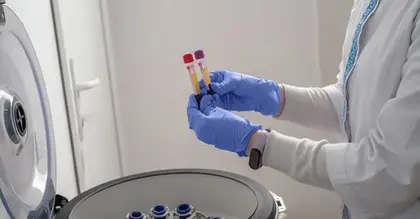
- A drug used as a breast cancer treatment has been authorized for use as a preventative drug in post-menopausal women at high risk of breast cancer, in England, United Kingdom.
- Previous research shows that this drug can reduce the risk of breast cancer by 49%.
- The Medicines and Healthcare Products Regulatory Agency hopes this decision increases awareness among high risk women about the possibility of using this preventive treatment.
The Medicines and Healthcare Products Regulatory Agency (MHRA) in the United Kingdom has recently authorized the breast cancer drug anastrozole as a preventative medication.
The official press release describes it as “a hormone treatment used for breast cancer in post-menopausal women.”
This authorization means that women at high risk of breast cancer will be able to access a 5-year course of the medicine shown to reduce the risk of developing this cancer.
The MHRA decision was based on the results of the IBIS-II study, published in
Lead author Prof. Jack Cuzick, head of the Cancer Prevention unit and John Snow professor of epidemiology at Queen Mary, University of London said the trial was carried out because specialists acknowledged that women treated for breast cancer in one breast were less likely to have a recurrence of their cancer after taking this drug.
“Basically, the first data came by looking at new cancers in the opposite breast and treatment trials,” he said in an interview with Medical News Today.
The IBIS-II trial ran from February 2, 2003, to January 31, 2012, across 153 breast cancer treatment centers in 18 countries and recruited 3,864 post-menopausal women at high risk of breast cancer.
The decision to license this medication for prevention as well as treatment of breast cancer, has been made as part of a programme run by the MHRA to repurpose existing medication for different conditions.
Anastrozole is a type of drug called
Most estrogen is made in the ovaries in women of reproductive age, but this decreases significantly after menopause. However, “for post-menopausal women, [estrogens are] going to be introduced by changes in fatty tissue,“ noted Prof. Cuzick.
“So there is an enzyme that actually takes fatty tissue and does some of the work. It’s a complicated process, but it’s a key thing that converts it towards estrogen. It’s not one step, its several steps and anastrozol stops the working of that particular gene. So it stops the production [of estrogen].”
– Prof. Jack Cuzick
When taken preventatively the drug is taken once a day, every day, for 5 years.
Women at moderate and increased risk of breast cancer should consider taking the drug, said Prof. Cuzick. However, he admitted that determining breast cancer risk was a challenge as there are many factors that can increase risk.
“Basically, 5% [increased risk] is the level at which you should consider it, 8% risk at 10 years is the level we think you should definitely be taking in. So that’s the current situation,” he said.
Prof. Cuzick explained that the preventive effect of
“One of our next research projects will be to look at the extent to which we can introduce lower doses and still prevent estrogen production, but yet have minimal side effects. So that will be the next step,” he said.
Lester Barr, cofounder of the nonprofit organization Prevent Breast Cancer, told MNT that, following the MHRA decision, “[p]ost-menopausal women with a family history of breast cancer, who are themselves at moderate or high risk of breast cancer, can be prescribed anastrozole to lessen their risk of developing the disease.“
“These women should speak to their GP [general practitioner or family doctor] and ask whether they are eligible for referral to a family history clinic. If so, a specialist there will assess their risk in more detail and then discuss anastrozole with them as just one of the options that can lower breast cancer risk for high-risk women,” said Barr.
The MHRA decision could support increased genetic testing and a more personalized approach to medicine, said Dr. Wael Harb, hematologist and medical oncologist at MemorialCare Cancer Institute at Orange Coast and Saddleback Medical Center in Orange County, CA.
According to him, “[t]his decision could support a move towards more genetic screening as it represents a more personalized approach to medicine, identifying individuals who could benefit from preventive treatments.“
“As more research becomes available, it’s possible that the criteria for who can receive anastrozole preventatively could widen, especially if it’s shown to be effective in a broader population,” he added.
Dr. Hana Patel, a family doctor in the U.K.’s National Health Service (NHS), and medico-legal expert witness, told MNT that “[o]verall, research suggests that just one in four eligible women taking anastrozole should prevent around 2,000 cases of breast cancer in England.”
However, she cautioned that not all women at risk of breast cancer “have to take it: there are pros and cons.”
In the United States, the drug is already used off-label as a preventive measure against breast cancer, said Dr. Parvin Peddi, director of Breast Medical Oncology for the Margie Petersen Breast Center at Providence Saint John’s Health Center in Santa Monica, CA.
Yet, like Dr. Patel, he cautioned that it may not be the right choice for everyone. While studies have proven the drug to be safe, it nevertheless can come with its own set of side effects that might give some women pause:
“We have a lot of data on the safety of this medication from its use in treatment of patients with breast cancer. Main issues are worsening menopausal symptoms, such as hot flashes or vaginal dryness, as well joint stiffness/pain in some patients. They can also thin bone density so they are not a good choice in patients with osteoporosis.“
While “[t]his medication is already in use off-label in the U.S.“ to reduce breast cancer risk, Dr. Peddi believes that, “[g]iven side effects, it will probably not be widely used for cancer prevention irrespective of approval status.”
Figuring out whether eligibility could be expanded in future, and how these risk assessments could be carried out by the NHS, the public provider of healthcare in the U.K., was the focus of ongoing research, said Dr. Sacha Howell, Prevent Breast Cancer expert, and senior lecturer and honorary consultant in medical oncology at The Christie, in Manchester, U.K.
He told MNT: “We should be in a position to expand eligibility through risk algorithms that are currently in development. These algorithms do not only look at family history, but also take into account an individual’s lifestyle and other risk factors including, where available, mammographic breast density and/or
“The PROCAS research studies have shown that risk algorithms such as Tyrer-Cuzick and CanRisk are able to identify women at a significantly increased risk of breast cancer even when there is no family history of the disease. The next step is working on studies to determine how we could roll out risk assessments like this in the NHS,” said Dr. Howell.





